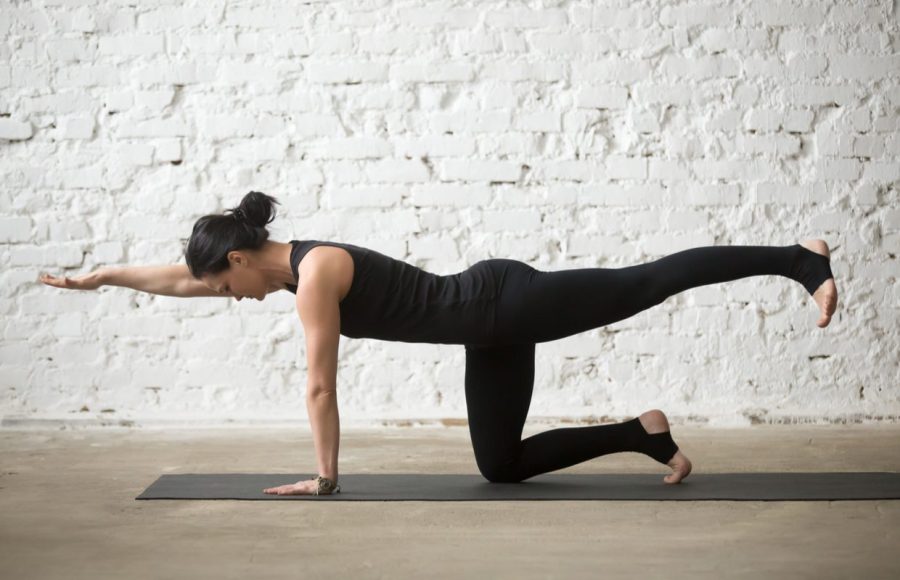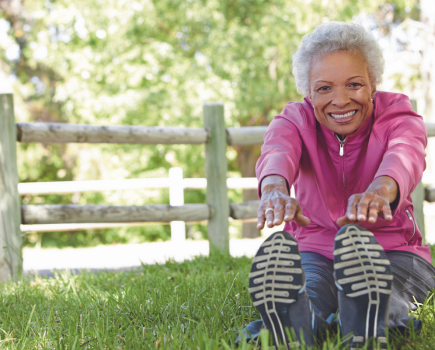Did you know, you can improve your posture through exercise? Discover the main causes for bad posture and back pain, according to the experts, along with the best at-home exercises to improve your posture…
Modern society has seen a huge increase in the number of people struggling with poor posture and back pain. The pandemic, which caused millions of us to work from home in less than ideal set-ups, only made the issue worse. We chatted to some leading fitness and wellbeing experts to better understand what causes these issues and which exercises you can try at home to improve your posture…
What exactly is good posture?
You might think good posture means standing bolt upright at all times, but this isn’t necessarily the case. ‘The posture police of old want you to think of posture as a rigid ideal, but instead it should be more relaxed,’ explains Vytas Baskauskas, yoga specialist for Beachbody On Demand.
‘It is also going to be different depending on whether one is seated, standing or lying down. Through all orientations, however, the spine should be straight and long, while maintaining its natural curvature. Over time, correct posture will minimise strain on the body and maintain balance with the muscles and skeleton.’
What causes bad posture?
Poor posture can be caused by a wide range of bad habits. ‘Lack of movement, one-sided or incorrect movements lead to compensations in the musculoskeletal system – certain areas are used less, others all the more often. This shift often results in muscular imbalances, which can often lead to pain and poor posture,’ explains Dany Ford, sports consultant for VAHA.
‘Lifestyle also contributes to posture changes,’ explains PT Nicole Chapman. ‘Bad habits such as slouching, long periods of inactivity (prolonged sitting – desk jobs, long driving for example).
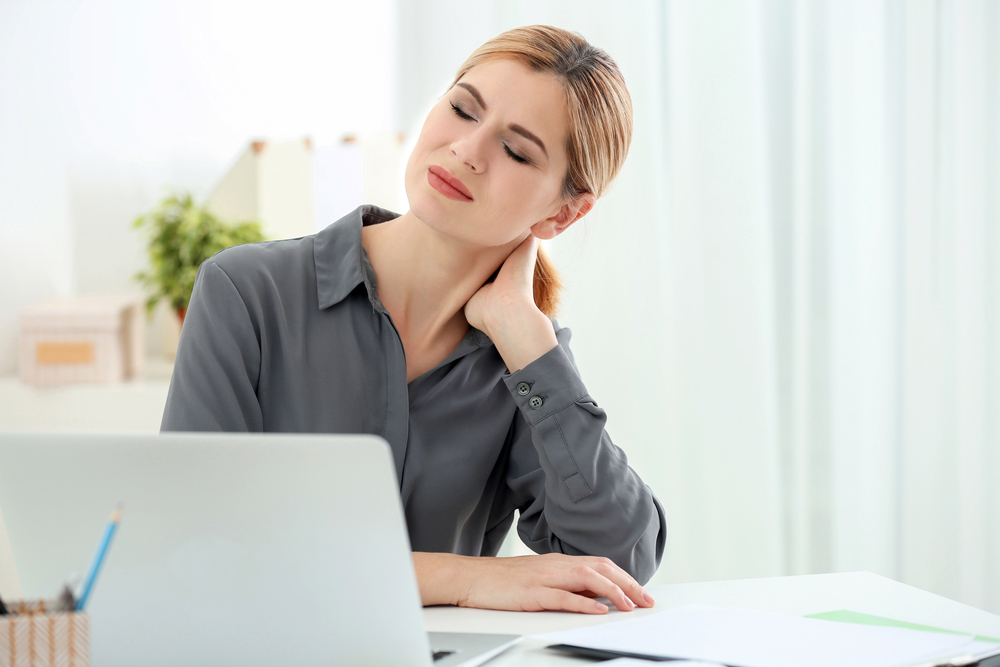
Is sitting at a desk all day bad for my posture?
Many experts are in agreement that long periods of inactivity while sitting hunched over a desk is a key reason for poor posture and back pain. As Dany points out: ‘75% of all occupations worldwide are performed in a sitting position, 94% of which are performed in front of a PC. Those who neglect the essential building blocks of functional movement will quickly find themselves in a vicious circle of imbalances.
75% of all occupations worldwide are performed in a sitting position
But how exactly does your desk job impact your posture? ‘Sitting impacts your posture in a variety of ways – hip flexors and hamstrings are shortened and begin to tighten, which causes irregularities in your standing and walking postures,’ Nicole explains. ‘What’s more, your back muscles weaken from lack of use and your core muscles are less active. This reduces their ability to keep everything drawn together.’
If your poor posture or back pain is being directly caused by your job, there are some office essentials that could help. ‘One of the greatest postural inventions is the convertible desk that can transition from sitting to standing. I highly recommend this,’ explains Vytas. ‘Spending less time sitting will help your posture immensely. In addition, while sitting, make sure that your desk is at the proper height and so is your monitor. Studies have shown that a backless chair such as a stool or even an exercise ball can help as well.’
What are the most common posture problems?
‘The most common problems that arise from long hours of sitting are forward head posture, hunchback (upper back) and sway back (lower back), Vytas tells us. ‘Bad posture can affect the shape of muscles, deform the skeleton and cause abnormal development. Ultimately, these can lead to pain.
‘Most of the time, people aren’t aware of their regular bad postural habits until pain arises and they seek professional help. So much of bad posture is developed from years of unconscious habits and thus it is very difficult to be aware of. It takes mindfulness to examine our old patterns,’ adds Vytas.
How does our posture change as we age?
‘There are several factors to consider as to why our posture changes as we get older,’ explains Nicole. ‘As we age our back undergoes degenerative changes. Changes include disk degeneration (over time, the middle of your body (trunk) becomes shorter as the disks lose fluid and become thinner) this disc hardening and loss of flexibility results in a compressed total length of the spine and a forward tilt called Kyphosis.
It’s also important to consider how your bone density changes as you age, which can lead to Osteoarthritis. As Nicole explains, ‘Osteoarthritis, which is more commonly seen in women, initially affects the smooth cartilage lining of the joint. This makes movement more difficult than usual, leading to pain and stiffness. Osteoporosis occurring in women after the menopause is a result of bone density loss making the bones brittles and particular susceptible to breakage particularly in the upper back – making it difficult to support the weight of your body leading to a bent forward posture.’
Click here for more information on osteoarthritis.
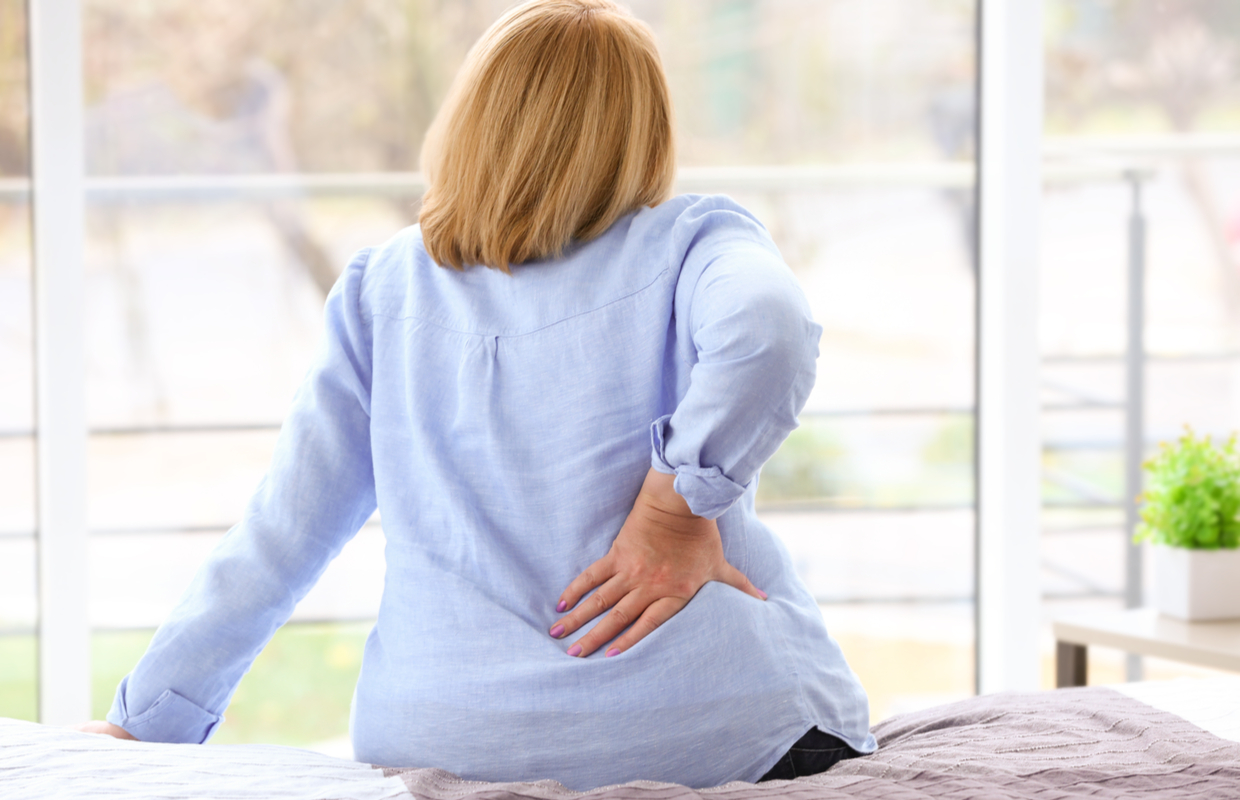
Can exercises improve posture?
According to Nicole: ‘The good news is you can improve your posture and help prevent and delay the postural degenerative changes that occur as part of the natural aging process. To improve your posture, focus on exercises that strengthen your core – especially the abdominal and lower back muscles (often neglected and not thought of when we think core) that connect to your spine and pelvis. By strengthening these muscles, it will also improve stability and mobility, reducing the chance of aches and pains as well as falls.
‘Posture improving exercises built into your workouts, combined with mindful postural checks in all of your exercises – ensuring you engage your core and maintain correct form throughout the movements – will have a huge impact. This is why your future self will thank you for incorporating strength training into your weekly well-being. By exercising regularly you will also help to maintain a healthy body weight which will put less pressure on your bones and joints, in turn improving your posture,’ Nicole adds.
Posture exercises: at-home bodyweight workout for a better posture
PT Nicole Chapman has created an exclusive posture-improving workout for Top Santé UK, made up of 6 strengthening exercises. Perform each exercise below for 40 secs with a 20 second rest. Complete the circuit 3 times with 1 minute rest between rounds for a 20 minute workout.
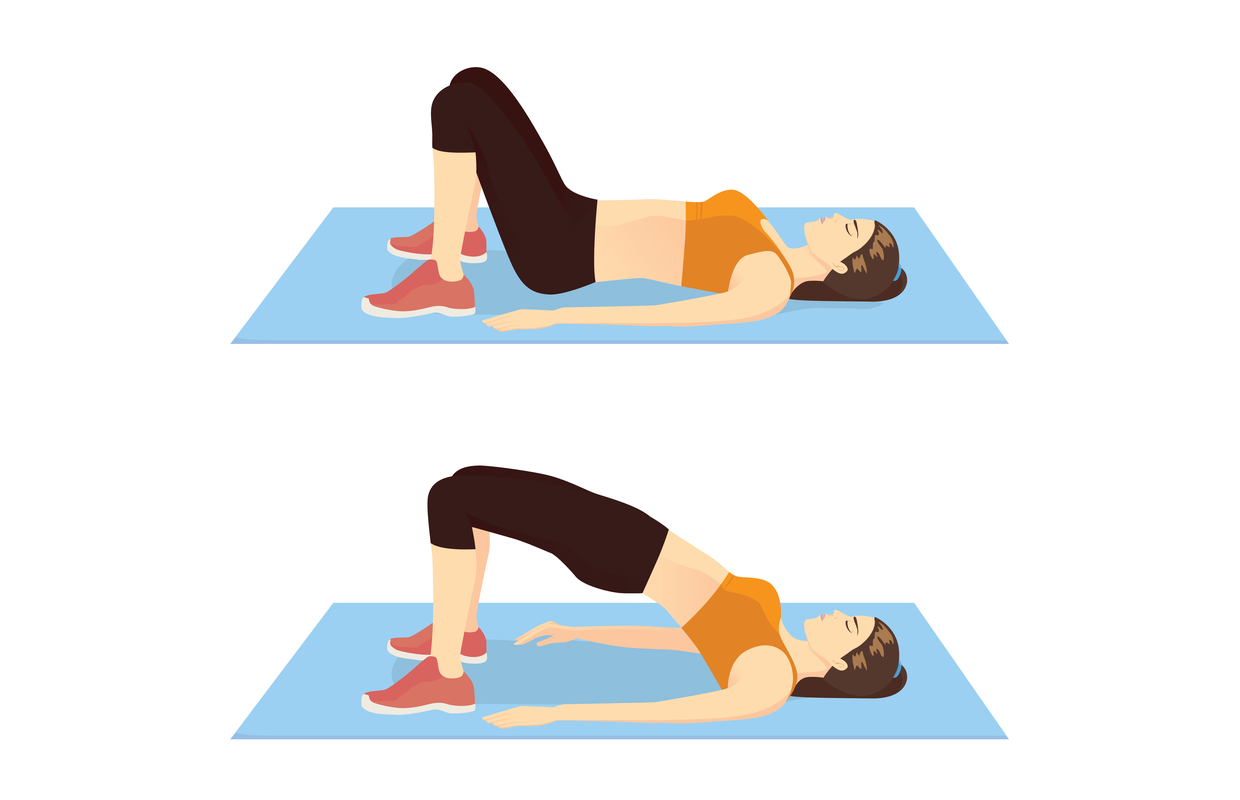
1. Glute Bridge
- Lie flat on your back, bend your knees keeping them hip-width apart and plant your feet on the floor. Rest your arms down by your side.
- Press through your heels, tuck your pubic bone towards your belly button, squeeze your glutes and raise your pelvis off the floor until your body forms a straight line from chin to knees, resting on your shoulders, keep squeezing your glutes!
Muscles targeted: Glutes on fire! Hamstrings, quads, core
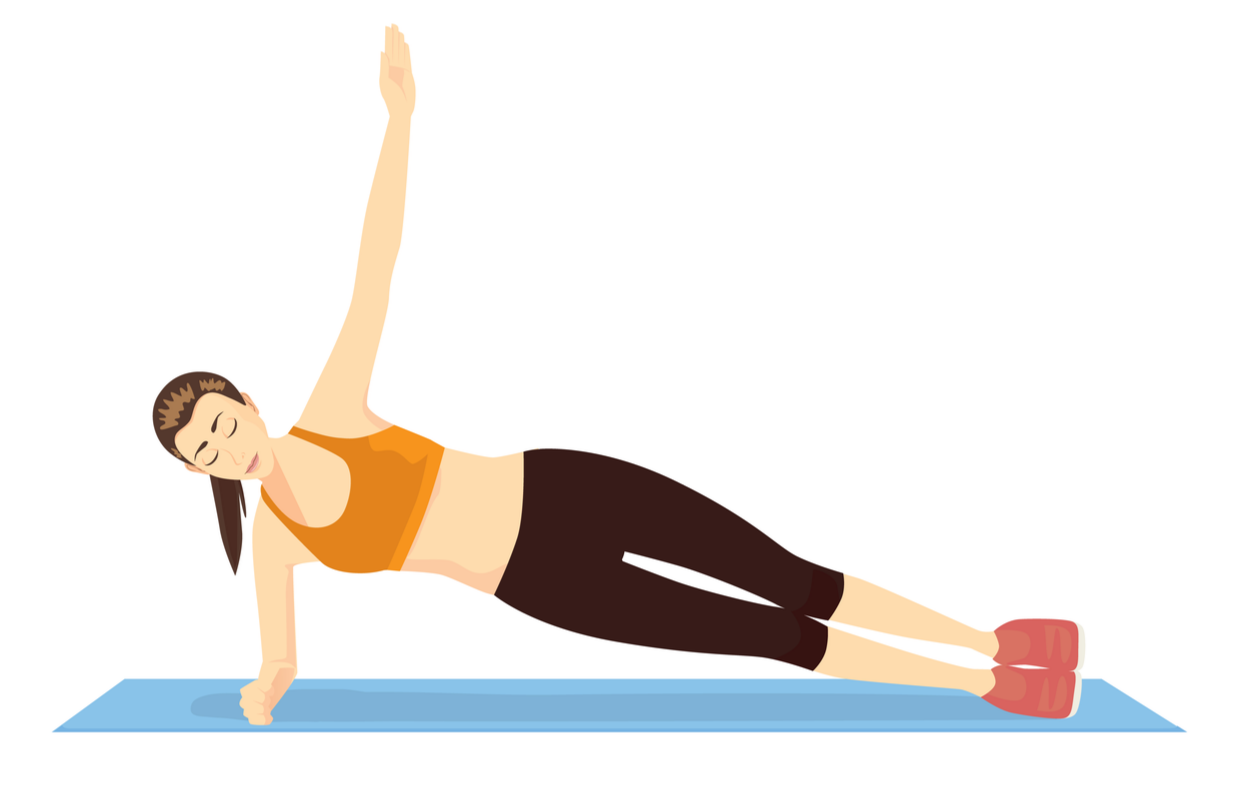
2. Side plank – 20 seconds each side
- Lie on your left side with your forearm flat on the floor, bottom elbow lined up directly under your shoulder, extended both legs out.
- Engage your core and lift your hips off the floor. You can keep your hand on your hip or for the harder option raise your top arm straight above you reaching for the ceiling.
- N.B. If this is too difficult then bend your bottom leg at the knee and rest it on the floor keeping your body in a straight line and raising your hips up towards the ceiling as high as possible.
Muscles targeted: Obliques, Shoulder, Back, legs from heel to hips! (My fav exercise for your core!)
Top tip: for more stability stagger your feet so the top foot is in front of the lower leg foot.
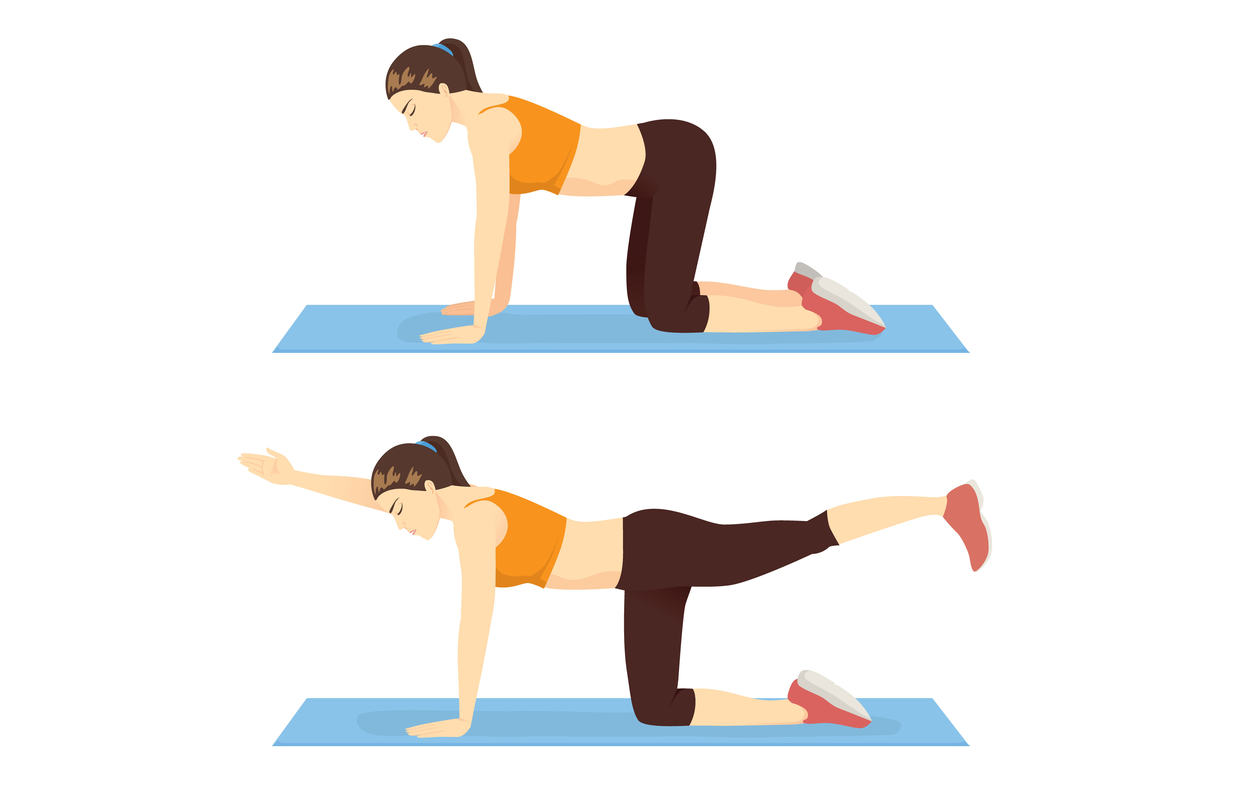
3. Bird dogs
- Begin on all fours nicely aligned with your hips above your knees and your shoulders directly above your wrists. Engage your abdominals, as this will help you maintain a neutral spine.
- Draw your shoulder blades back and simultaneously raise your left arm and right leg keeping your hips and shoulders parallel to the floor (avoiding pelvic rotation).
- Lift your leg up only as high as you can while maintaining a flat back. If the spine starts to curve, reduce the height of the leg. Keep your eyeline to the floor to maintain a neutral spine. Pause for 2 seconds at the top.
- Return arm and leg to the start position and repeat on the other side. Keep alternating between for the full 40 seconds.
Muscles targeted: Core, Erector Spinae, Glutes – this is a fabulous stabilising move which also helps ease lower back pain.
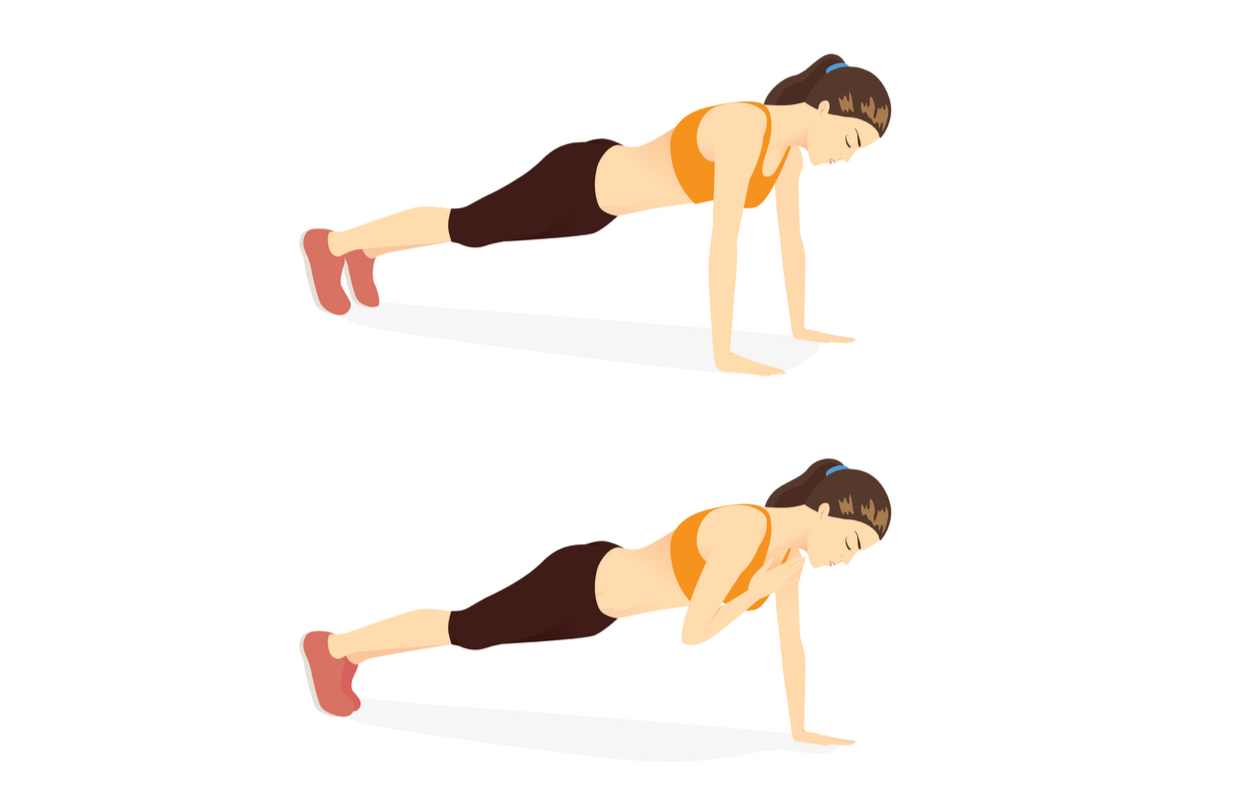
4. High plank with shoulder taps
- Starting in the high plank position, with your hands shoulder width apart and directly beneath your shoulders.
- Keeping your core braced, touch your left shoulder with your right hand and then return to start position and switch hands. Then, touch your left hand to your right shoulder. Keeping alternating sides.
- Take it at your own pace the slower the better. If this is too difficult drop to your knees and push your hips forward to create a straight line shoulders through hips to knees.
Muscles targeted: Shoulders, Core, Glutes, Hamstrings, Quads, Triceps – Real full Body!
Top tips: press your hands in to the floor to activate your shoulders. Squeeze your glutes to avoid as much hip rotation as possible. Allow your spine head and neck to stay aligned.
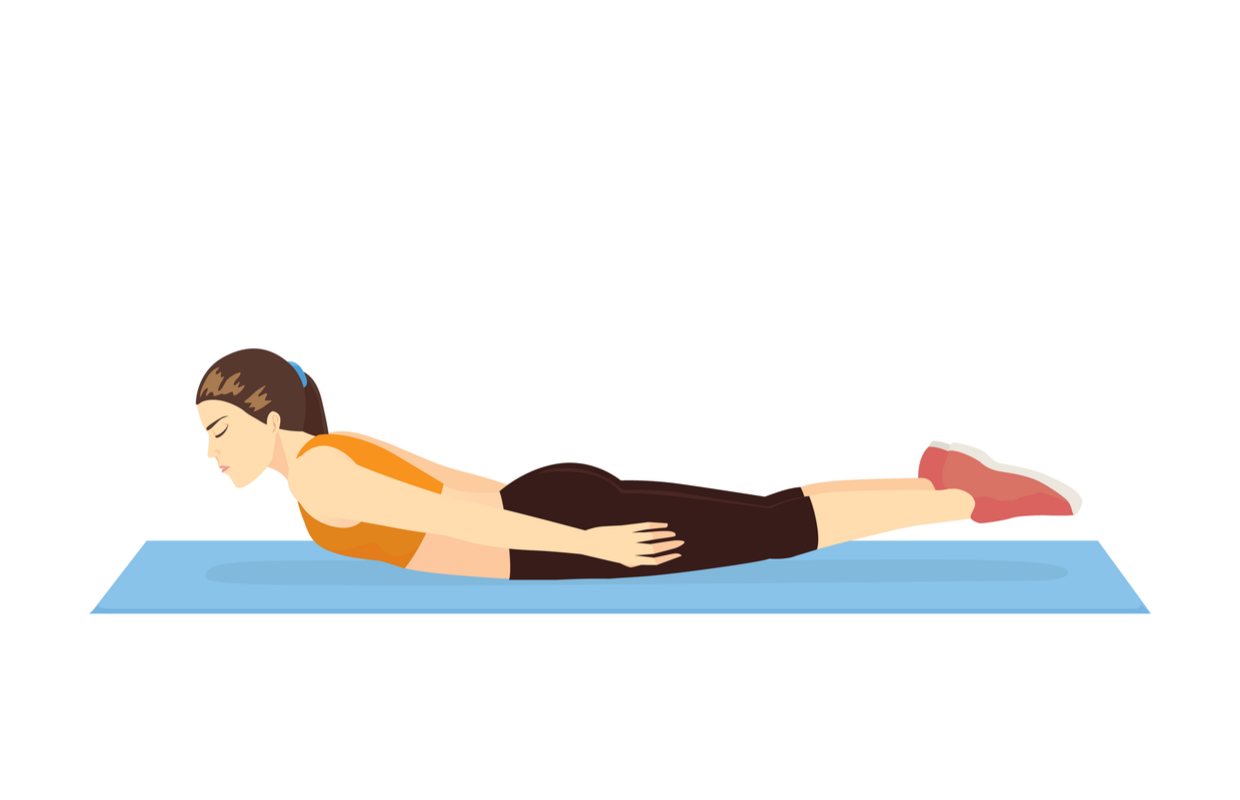
5. Supermans
- Lie on your stomach on a flat surface with your arm raised above your head. Engage your glute throughout this move to protect your lower back (squeeze the bottom).
- Simultaneously lift your arms leg and head off the floor as high as you can hold for one second and lower. Repeat for the full 40 seconds to strengthen your lower back.
Muscles targeted: Lower back muscles (Erector Spinae), Glutes, Hamstrings, Abdominals, Upper back (traps)
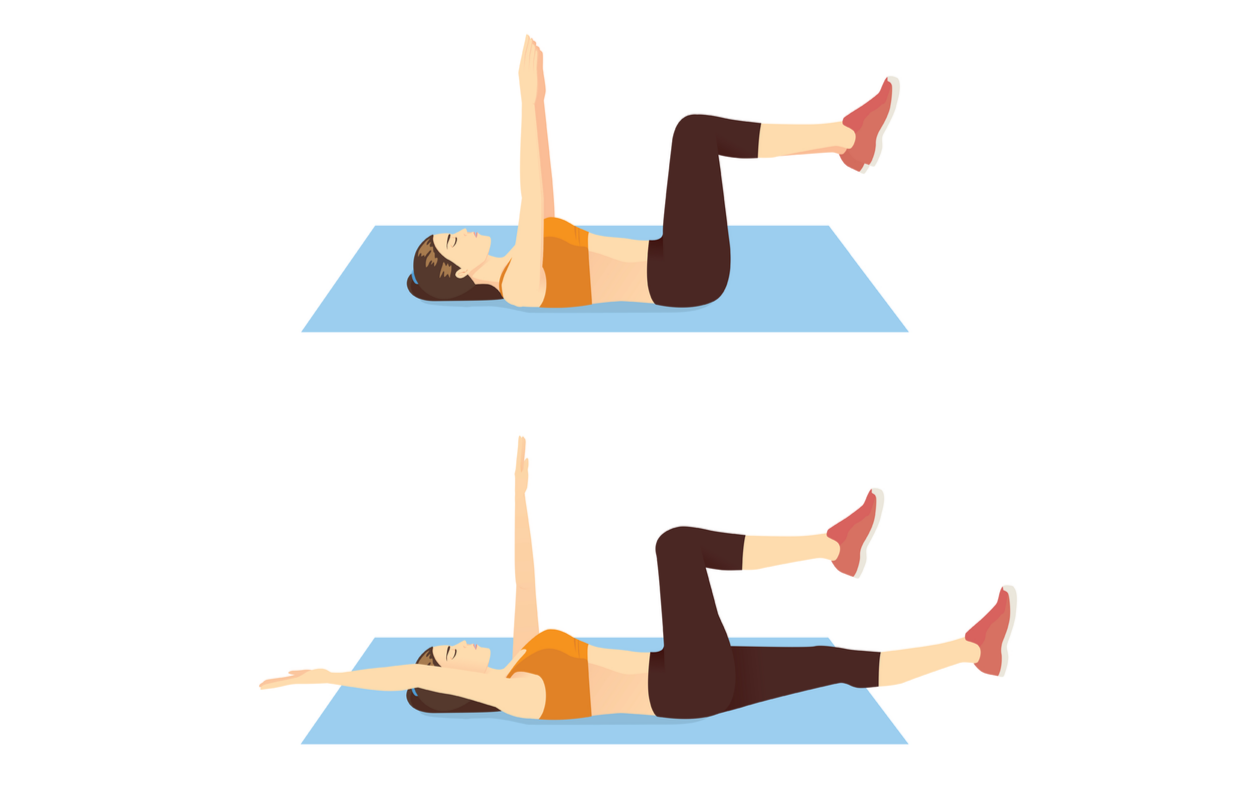
6. Dead bug
- Lay on your back and allow your lower back to lay flat on the floor. Bring your knees in towards your chest until your knees are directly above your hips. Lift your arms straight towards the ceiling so that your elbow is above your shoulder and palm face each other. This is your start position.
- On an exhale extend your left arm and right leg until your leg is straight and they are both above the floor. Inhale, engage your abdominals and return the arm and leg to start position.
- Repeat on the opposite side and keep alternating.
Top tips: Engage your core and use it to draw the arm and leg back to the start position.
Muscles targeted: Transverse Abdominis (deeper core muscles), Erector spinae (back muscles).

